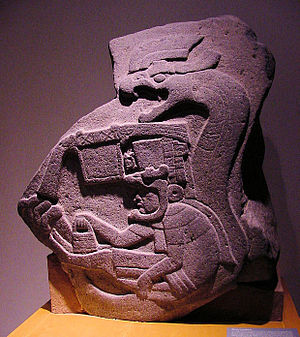
Back Mitologia olmeca Catalan Mitología olmeca Spanish Agama Olmek ID Wierzenia Olmeków Polish Mitologia olmeca Portuguese Olmekisk mytologi Swedish Olmek mitolojisi Turkish

Courtesy George & Audrey DeLange, used with permission.
The religion of the Olmec people significantly influenced the social development and mythological world view of Mesoamerica. Scholars have seen echoes of Olmec supernatural in the subsequent religions and mythologies of nearly all later pre-Columbian era cultures.
The first Mesoamerican civilization, the Olmecs, developed on present-day Mexico southern Gulf Coast in the centuries before 1200 BCE. The culture lasted until roughly 400 BCE, at which time their center of La Venta lay abandoned. The Olmec culture is often considered a "mother culture" to later Mesoamerican cultures.
There is no surviving direct account of the Olmec's religious beliefs, unlike the Mayan Popol Vuh, or the Aztecs with their many codices and conquistador accounts. Archaeologists, therefore, have had to rely on other techniques to reconstruct Olmec beliefs, most prominently:[1]
- Typological analysis of Olmec iconography and art.
- Comparison to later, better documented pre-Columbian cultures.
- Comparison to modern-day cultures of the indigenous peoples of the Americas.
The latter two techniques assume that there is a continuity extending from Olmec times through later Mesoamerican cultures to the present day. This assumption is called the Continuity Hypothesis. Using these techniques, researchers have discerned several separate deities or supernaturals embodying the characteristics of various animals.
- ^ Pool, p. 98.
© MMXXIII Rich X Search. We shall prevail. All rights reserved. Rich X Search